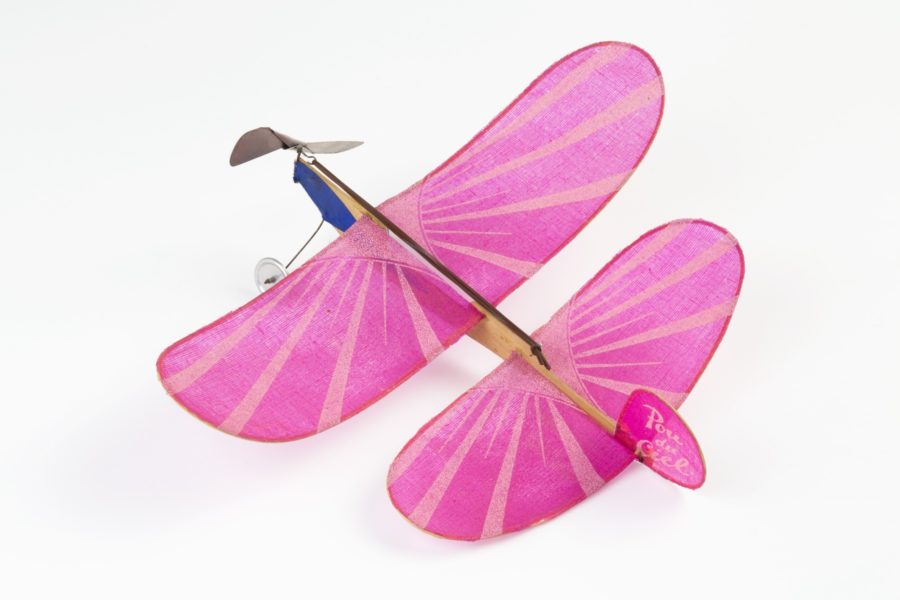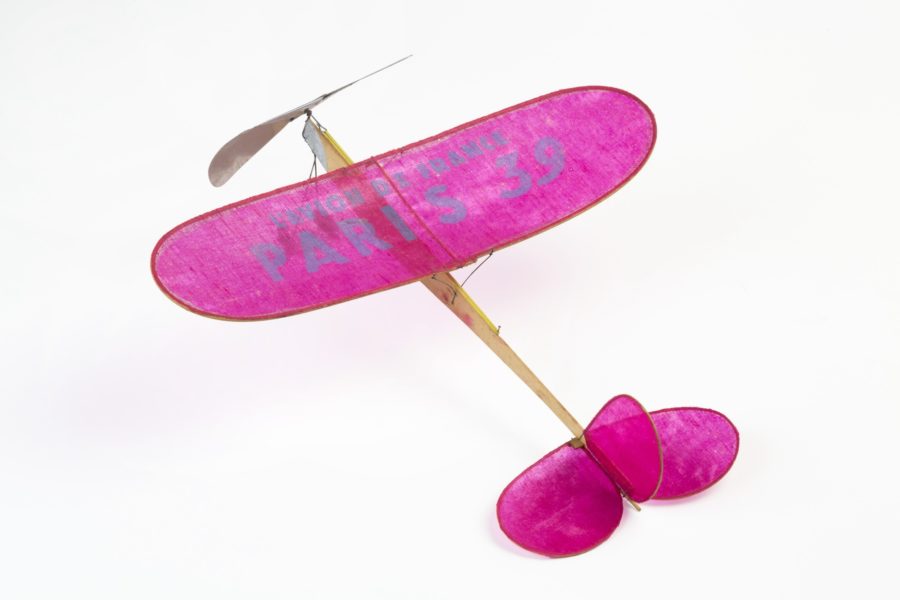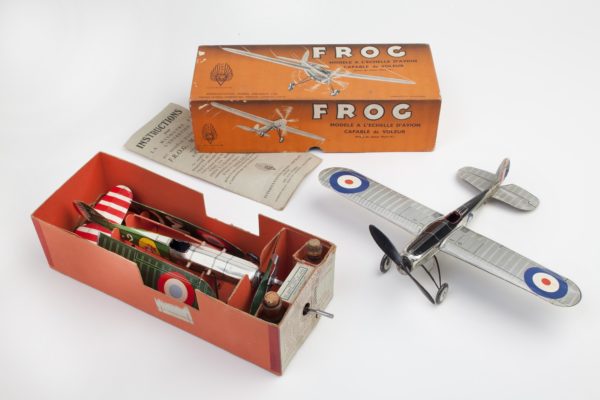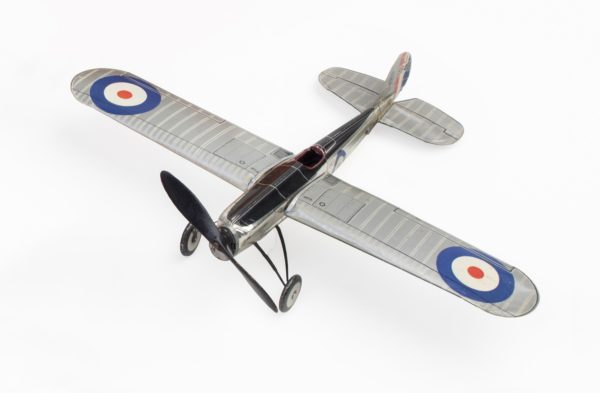From the very beginning of the production of small aircraft, toy manufacturers were concerned with the question of flight.
Frédéric Marchand devotes a whole chapter of his book “Avions-Jouets des origines à 1945” to Philippe Lepage’s collection of flying toys, giving a good overview of the inventions and discoveries of toy manufacturers.
By assembling very light materials such as balsa, fine cloth, aluminium foil and paper on the one hand, and a long rubber band attached to a well-shaped propeller on the other, it was possible to make small flying planes. To get them to us, they had to avoid all the pitfalls: roofs, trees, ponds and streams, domestic animals, etc. Often, they stayed safely in their box!
The toys in the collection give just a glimpse.
Not so long ago, my grandchildren were discovering the joy of sending their father to the rescue on the roof!
Tipp & Co in Germany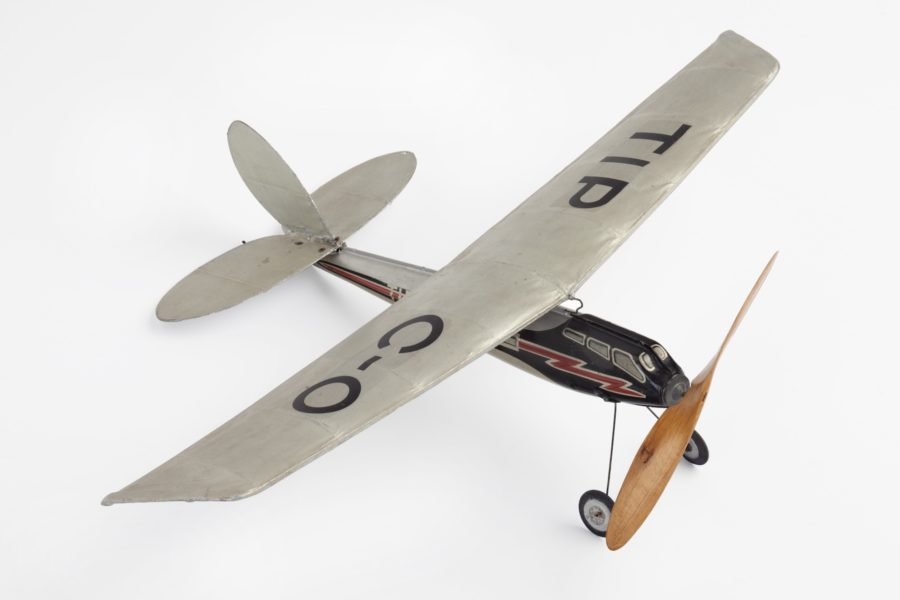
1936 -1937, aluminium foil, coated canvas, elastic movement, 49 x 35 cm
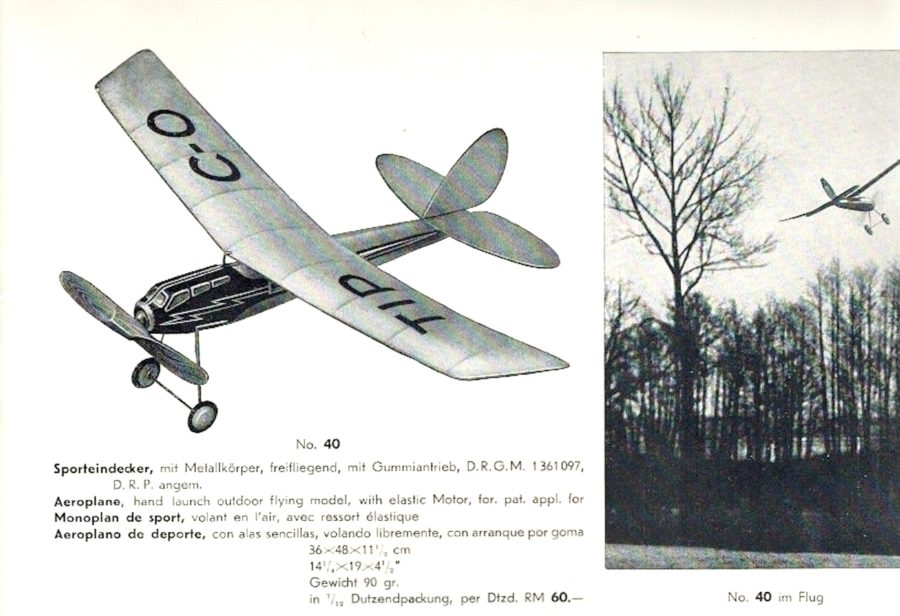
Tipp & Co 1937 catalogue showing the toy in flight
Emmert-Hames in United States
FLYIN’-FOOL
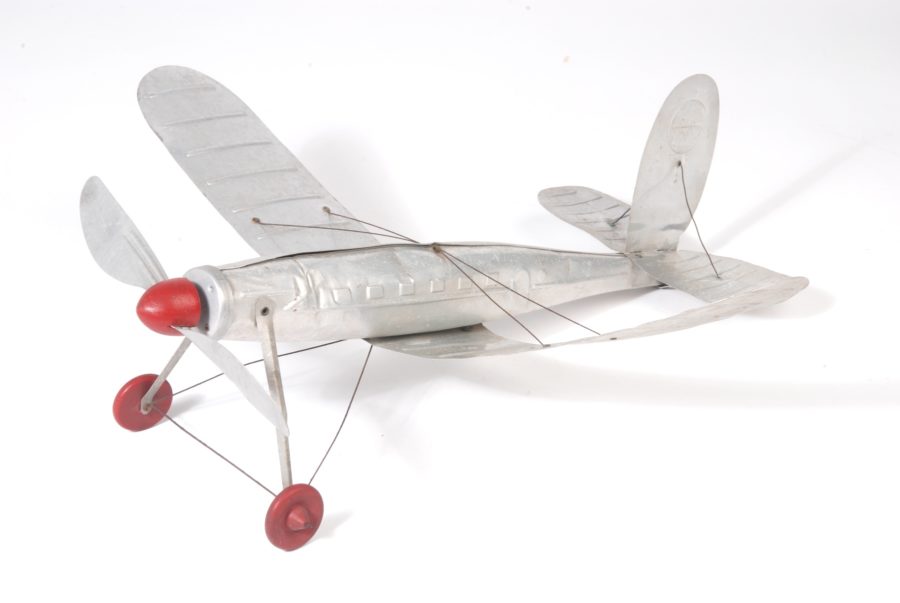
1934-1936, aluminium sheet, elastic movement, 46 x 40 cm
L’Avion de France
Le Pou du Ciel
From 1955, painted canvas, balsa wood, aluminium sheet, elastic movement, 29 x 22.5 cm
Paris 1939
From 1955, painted canvas, balsa wood, aluminium sheet, elastic movement, 38 x 6 cm
In Great Britain
Tri-ang Toys
Frog Mark Model IV
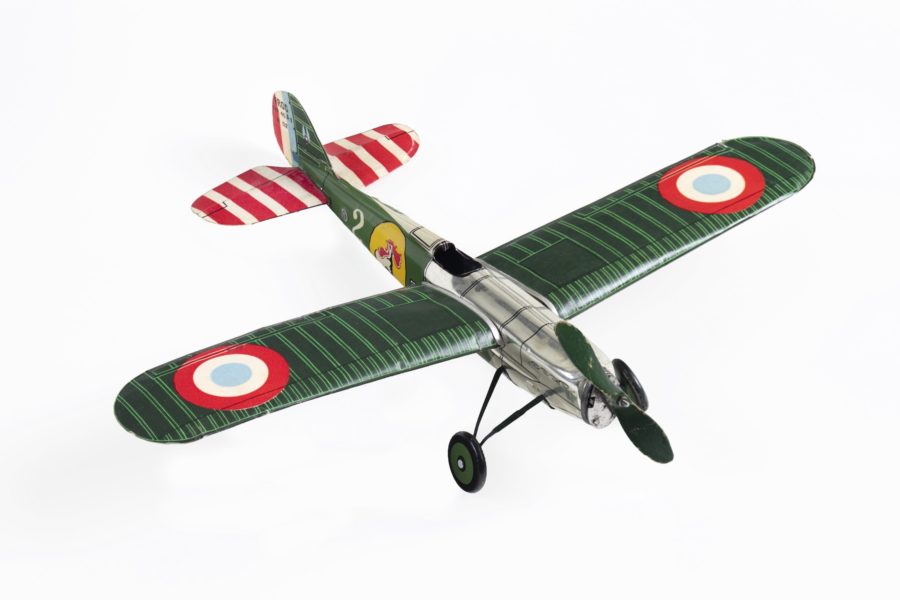
1933, painted canvas, balsa wood, aluminium sheet, elastic movement, 30 x 24 cm
The case is fitted with a system for rapidly twisting the rubber band.
Rigby
Hurricane MW3
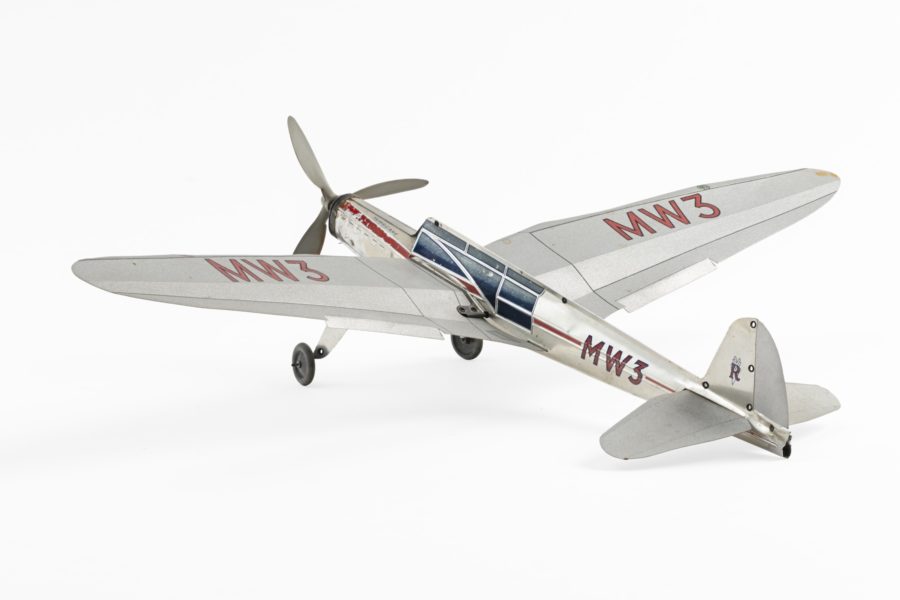
1938, aluminium sheet, paper, elastic movement, 50 x 35 cm
Asano in Japan
Glider Plane
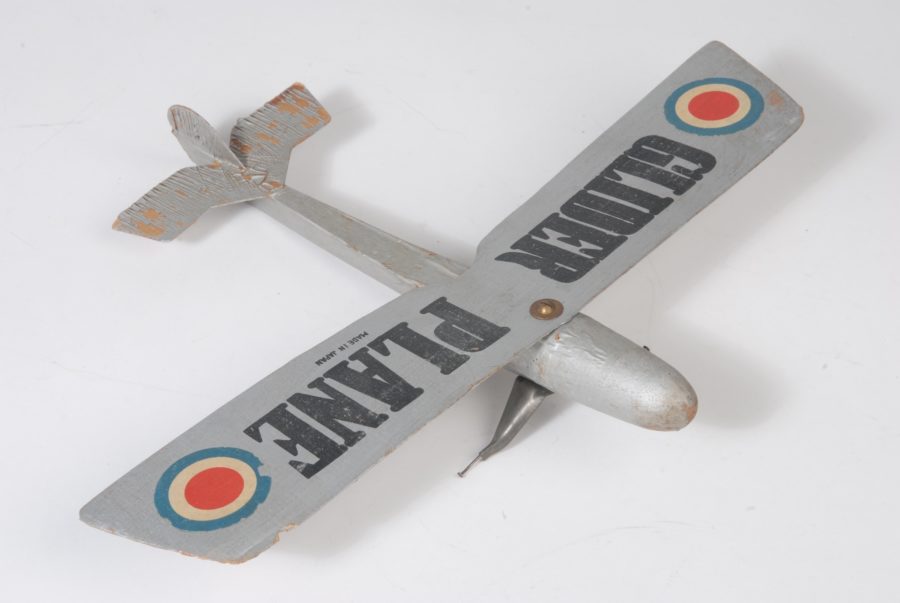
1933, painted cardboard and paper, rubber-band launcher, 30 x 22,5 cm
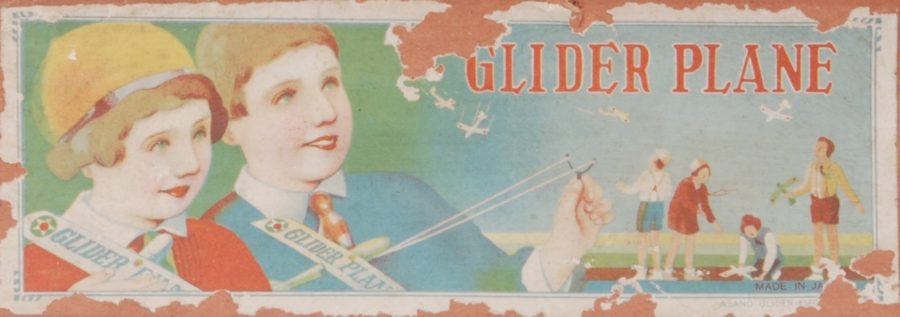
Label on the box

